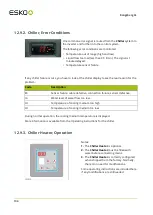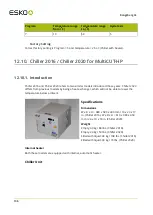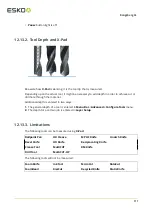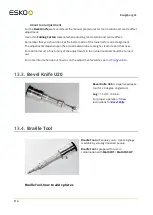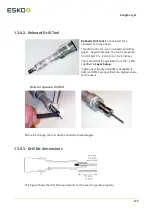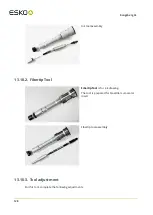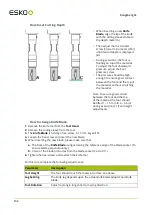
13
Kongsberg XL
Velocity Z
Velocity Z is material dependent and may require experimentation.
The value shown in the illustration is suitable for (and has been tested with) 3mm Dibond.
Z-axis depth
Z-axis depth is determined by the material thickness and hole depth.
It can be calculated as: Z-axis depth = hole depth – material thickness.
According to the Raster Braille manual the hole depth should be 1,07mm (0,042”).
You may find that the holes being milled are either too shallow or too deep. If so, use this
parameter to adjust to a suitable setting.
You will see this if the spheres sit too low or too high.
The standard specifies a sphere height of 0,6mm (0,023”).
Example using 3mm Dibond: 1,07mm – 3mm = -1,93mm
Spindle RPM
Spindle RPM is material dependent and may require experimentation. The values shown in
the illustration are suitable for 3mm Dibond.
Drill holes
Drill holes check box should be enabled.
Layer: Braille Tool
Z-axis Depth
Z-axis depth should initially be set to the material thickness.
This parameter determines the pressure the
Braille Tool
will use to force the sphere into the
hole.
If you are using soft materials and notice indentations in the material, you can lower the value
to get a lighter pressure.
On the other hand, if the spheres are not fully inserted into hard materials, like acrylic, you
may increase this value to increase the force used by the
Braille Tool
.
118

